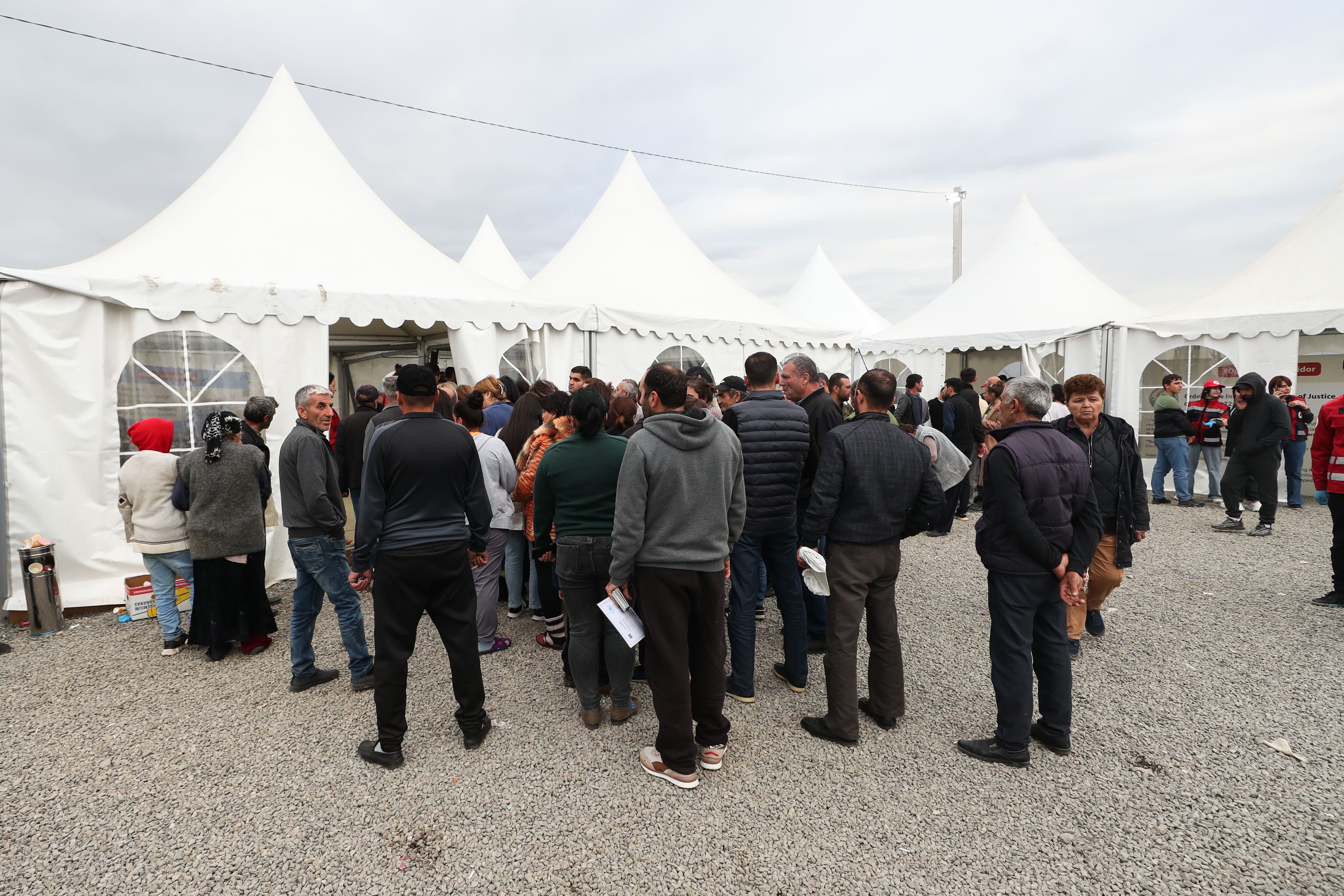
Armenian displaced persons from the Karabakah at one of the registration centre in Armenia (photo A. Avetisyan)
Last week, over 100,000 ethnic Armenians from the breakaway region of Nagorno Karabakh flooded into Armenia while the de facto authorities dissolved the entity, effective at the beginning of next year. Meanwhile, the displaced face the challenges of integration into Armenia and, for some, a possible return to Azerbaijan
Last week, on 28 September, Samvel Shahramanyan, the de facto head of the self-declared and unrecognised Nagorno Karabakh Republic, signed a decree on the dissolution of the separatist entity. Inhabited mainly by ethnic Armenians but situated within Azerbaijan, what remains of the former Soviet-era Nagorno Karabakh Autonomous Oblast (NKAO) will cease to exist by the end of the year.
Baku had assured local ethnic Armenians that those who chose to remain would have their rights and security protected but, after three decades of conflict and as many wars, few believed them. In fact, following renewed fighting in late September, most of the population left.
The population had been put at 120,000 but, by the time the last few residents trickled out, the number of Karabakh’s residents arriving in Armenia stood much lower at 100,617. Marco Succi, Rapid Deployment Team Manager with the International Committee of the Red Cross (ICRC), told media that only a few hundred people remain – mainly the infirm and the elderly.
Armenia says that the exodus of the Karabakh Armenians amounts to ethnic cleansing, claims that Azerbaijan strongly denies. The head of UNHCR in Yerevan, Kavita Belani, also confirmed that “there were no recorded incidents or cases of mistreatment against the people on the move”.
The influx, however, will place a heavy burden on Armenia, with the government announcing that it will pay each refugee 40,000 AMD (approximately 96 Euros) towards the cost of accommodation with a further 10,000 AMD (approximately 24 Euros) provided for utility charges over the next six months. They will also receive a one-off payment of 100,000 AMD (approximately 240 Euros).
Despite the exodus, however, Baku continues to offer their integration into Azerbaijan, a daunting task as for thirty years there had been little contact with the population except on the battlefield. After failed attempts to hold negotiations on integration since March, talks only resumed on 21 September following Stepanakert’s effective surrender. Baku’s delegation was headed by Ramin Mammadov, appointed Azerbaijan’s representative earlier this year.
Topics discussed included the restoration of humanitarian assistance and the supply of electricity to the recently besieged region, the possible creation of a joint field hospital manned by medical teams consisting of both ethnic Armenians and Azerbaijanis, and potential civil society exchanges to encourage people-to-people contact. Azerbaijan also created a working group to handle “social, humanitarian, economic, and infrastructure” issues associated with Karabakh’s integration.
Ethnic Armenians would also have the right to participate in municipal elections and be afforded cultural and linguistic rights as well as tax breaks, farming subsidies, and incentives for entrepreneurial activities.
However, few Armenians believe those assurances, though that might change over time. Despite the outpouring of support from many in Armenia, others have not welcomed their arrival. Armenian media has already reported that government loyalists have demanded that any Karabakh Armenians participating in opposition rallies should be deported or deprived of state assistance.
“It is difficult to determine at this stage whether the local population intends to return”, said UN Residential Coordinator to Azerbaijan, Vladanka Andreeva, in a statement issued after an assessment mission to Karabakh conducted on 1 October. “What was clear is that there is a need to build trust and confidence, and this will require time and effort from all sides”.
The United States has also called for an international observation mission to be deployed to “provide transparency and assure the people of Nagorno-Karabakh that the rights and safety of ethnic Armenians will be protected, especially those who wish to return”. In the meantime, over 100,000 Karabakh Armenia refugees continue to face an uncertain future.
















 To Top
To Top